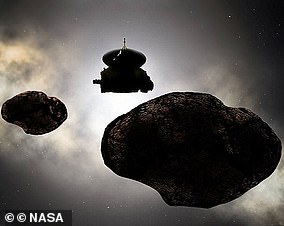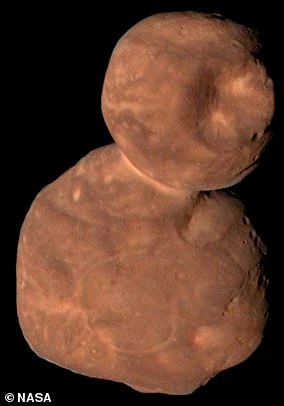Is there life…on Arrokoth? Red world shaped like a ‘snowman’ is rich in sugars that are similar to those found in human cells on Earth, study finds
David Bowie may have wondered if there was life on Mars, but scientists now think life may have started on a very different red world.
Experts in France and the US say a snowman-shaped space rock called Arrokoth, on the edge of our solar system beyond Pluto, is covered in sugars.
These include glucose and ribose – sugars that are ‘basic building blocks’ of RNA, the molecule found in human cells and most life forms on Earth.
At 4 billion miles from the sun, Arrokoth is “too cold to support life as we know it,” NASA says.
But the new findings suggest that smaller comets could have transported the sugar molecules needed for the origins of life from Arrokoth to early Earth, about 4.5 billion years ago.
Arrokoth is a bizarre ‘snowman-shaped’ red rock in our solar system, about 4 billion miles from the sun. Pictured is Arrokoth in a 2019 photo from NASA’s New Horizons spacecraft
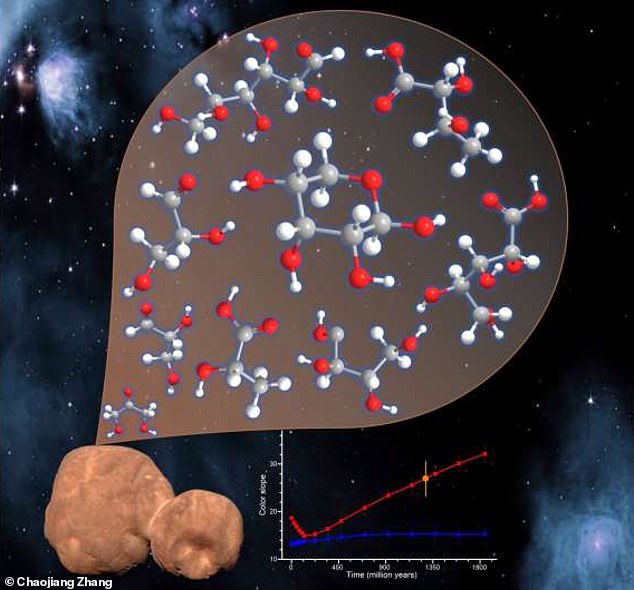
Researchers say Arrokoth is rich in glucose and ribose, the basic building blocks of RNA (a nucleic acid found in all living cells).
The team of experts, led by Dr. Cornelia Meinert from the CNRS-University Côte d’Azur in France, believe that methanol ice on Arrokoth is converted into sugars by cosmic rays, giving it its red color.
Arrokoth is not a planet but a ‘planetesimal’, meaning it is a very early remnant of the solar system left after the formation of the planets.
It consists of two bodies with diameters of 21 and 15 kilometers, which probably orbited each other before coming together billions of years ago.
It is in orbit in the distant Kuiper Belt and is 6.33 billion kilometers from Earth. It is the most distant object ever visited by a spacecraft.
In 2019, the New Horizons spacecraft completed a flyby of Arrokoth, revealing its unusual shape and stunning red hue.
But why Arrokoth — which means “sky” in the Native American Powhatan or Algonquian language — turned so red has remained a mystery.
Arrokoth’s surface is covered with a layer of frozen methanol, the kind of alcohol that makes people blind, and with organic compounds responsible for its red color.
One theory suggested that methanol could be converted into these red compounds at very low temperatures under the radiation of ‘galactic cosmic rays’: high-energy particles that bombard the solar system.
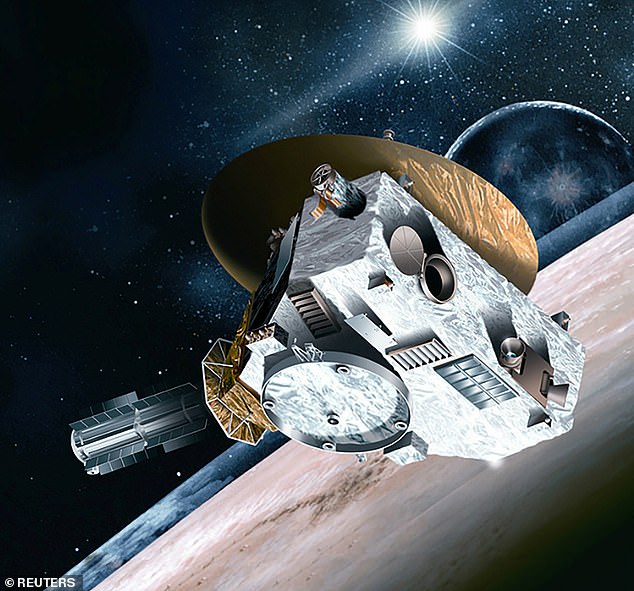
In 2019, Arrokoth became the most distant object visited by a spacecraft when New Horizons passed by this distant object
To test this theory, the researchers electron-cooled samples of frozen methanol to -233°C (40 Kelvin) to simulate 1.8 billion years of Arrokoth exposure to galactic cosmic rays.
Not only did they find that this process produced a red color extremely similar to that of Arrokoth, but that this also produced a ‘complex array’ of ‘biologically important’ sugars.
Dr. However, Meinert told MailOnline that this does not mean Arrokoth would have turned into a delicious treat.
Dr. Meinert says: ‘We detected glucose and galactose in the samples which are known to cause the sweet taste.
“Given the low concentrations of these individual sugars and especially other organic molecules in this ice cream, which is considered toxic, I would absolutely not lick such ice cream.”
Beyond its gastronomic significance, this discovery could be vital to understanding how life could arise in the solar system.
The sugars found on Arrokoth are the same simple organic compounds that make up RNA, a molecule similar to DNA found in all living cells.
Although these are organic compounds, this does not mean that Arrokoth, or similar rocks, would be home to any form of life.
Instead, the sugars on Arrokoth could have been transferred to the inner solar system via comets billions of years ago, where they could act as one of many ingredients necessary for the formation of life.
The researchers suggest that a ‘sugar world’ like Arrokoth would have pulled out of the Kuiper Belt billions of years ago and collided with our planet.
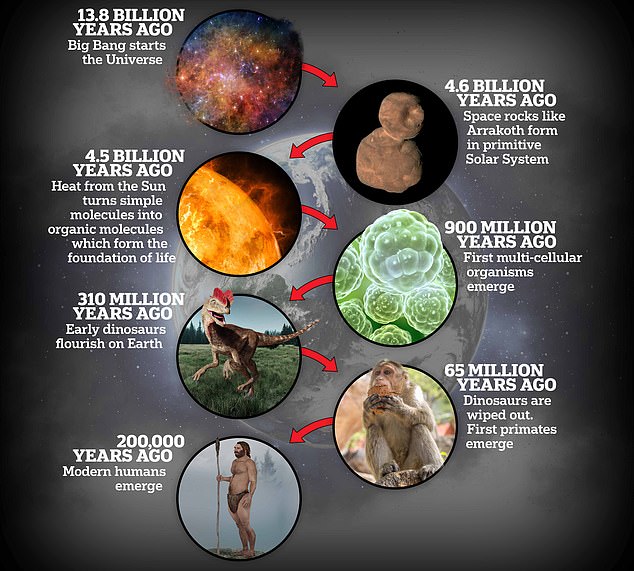
This discovery makes an object like Arrokoth a strong candidate for the origin of the molecules that sparked life on Earth
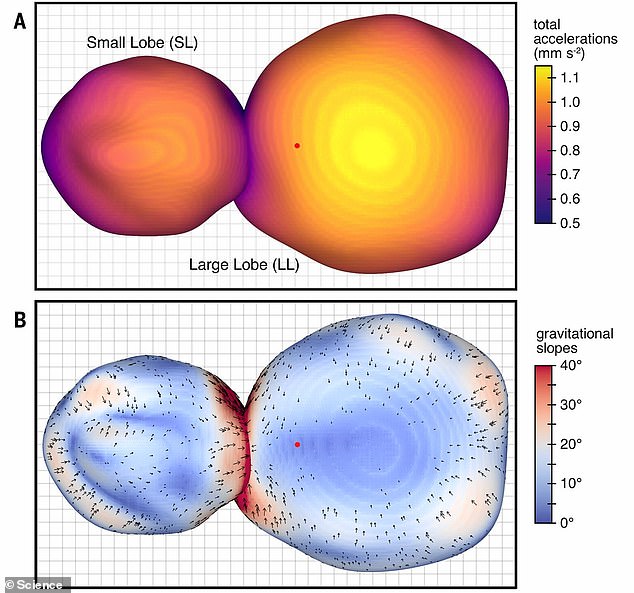
Although Arrokoth (pictured) is rich in organic molecules and is believed to contain ice at its core, it is unlikely to harbor any form of life.
Dr. However, Meinert explains: ‘Simple building blocks of life do not automatically lead to living cells.
‘Evolution is necessary to assemble simple molecules into functional polymers.’
Although research shows that the planetesimal contains old ice at its core, it is far too cold for liquid water to form.
Arrokoth and other planetesimals are left over from the formation of the planets 4.5 billion years ago and are found in the Kuiper Belt, where comets occur.
In their article, published in Proceedings of the National Academy of Sciencesthe researchers write that this “could have brought biologically important molecules such as carbohydrates to the early Earth.”
Studies have even shown that comets slowed by the gravity of other planets can keep biological molecules safe during a fiery collision with Earth.
That could mean that the origin of life as we know it could have started with a sweet red rock in the frozen reaches of space.

